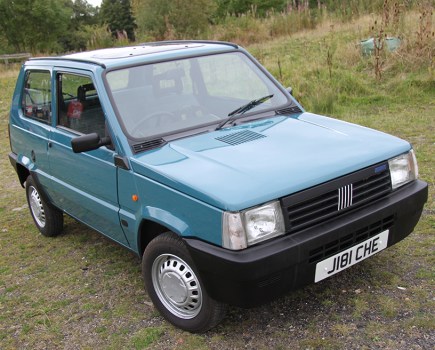Four decades on from the first superminis going on sale in Britain, which models are generally viewed as classics these days? Well, if part of the criteria of being a classic is that a car had to be considered a genuine advance in its day, a good many superminis fit the bill. The Fiat 127 and Renault 5? They were the cars that created the supermini phenomenon of the early ’Seventies. The Fiesta? That was the first ever front-wheel drive car from Ford. The Metro? That was the first proper British supermini and the car that helped to save Austin Rover in the early ’Eighties. And the Peugeot 205? That was the machine that transformed its French maker’s image overnight thanks to its fun, youthful driving style.
Buying a classic supermini now can bring major advantages in terms of fuel consumption, low insurance groupings and (usually) decent spares availability. And certain models still offer superb value for money when compared with more established sectors of the classic car market. Be warned, though, prices are on the rise for the most popular choices.
Even putting aside the sporty derivatives with hot hatch status, there’s many a supermini that’s now commanding strong money if it’s in exceptional condition. A 3000-mile Nissan Micra recently sold to Nissan UK was proof of this, with such a vehicle easily commanding around £2500 or more. Meanwhile, at £2000 or so we’ve recently spotted MkI/MkII Fiestas, Austin Metros, and MkII VW Polos in excellent order, generally with fewer than 40,000 miles under their wheels and a full history from new.
Earlier superminis in superb condition now fetch good money, aided by their rarity appeal. Relatively few examples of the earliest Fiat 127s and Renault 5s, for example, have survived the test of time, making low-mileage, all-original examples now sought after. Placing an accurate value on such rarities is tricky, though we wouldn’t be surprised by price tags of £3000 or more (though a not-so-immaculate example might be picked up for less than £2000). If that’s beyond your reach, then their successors (the 1983-on Fiat Uno and 1984-on MkII Renault 5) offer great value, with very smart cars available from around £1000.
BARGAIN BASEMENT
Superminis launched from the mid-’Eighties onwards generally offer the best value on the classic scene, with standard versions of the Peugeot 205, Citroën AX, Rover Metro (more affordable than earlier, rarer Austin versions) and Vauxhall Nova all available for around £1000 or less in good nick, with truly excellent examples topping out at around twice that amount. And there are plenty of good buys out there – including the 205 1.6 automatic that we bought 12 months ago for £550 and which is still going strong after 8000 miles of all-year-round use.
For real value, don’t forget the tiny 1993-on Fiat Cinquecento, the 899cc city car that can be picked up now for just £500-£1000 in decent condition, with the 1.1-litre Sporting examples commanding slightly more if very well presented. But if you fancy something a bit rarer or quirkier, you might consider a 1980-on MkI Fiat Panda or 1985-on Lancia Y10, both now fairly scarce but unlikely to fetch much more than £1000-2000 depending on condition.
Finally, don’t forget Japan’s contributions to the classic supermini scene, which aren’t just confined to the MkI Micra mentioned earlier. The 1972-on Honda Civic, 1978-on Colt hatchback, and 1981-on Daihatsu Charade ranges brought some variety to the market and can make good buys now, assuming you can find one. And rarities do crop up at tempting prices – such as the excellent, 50,000-mile Mazda 121 from 1988 that I picked up the other week for the grand sum of £332. Yes, when it comes to retro-style superminis, there are still bargains out there…



